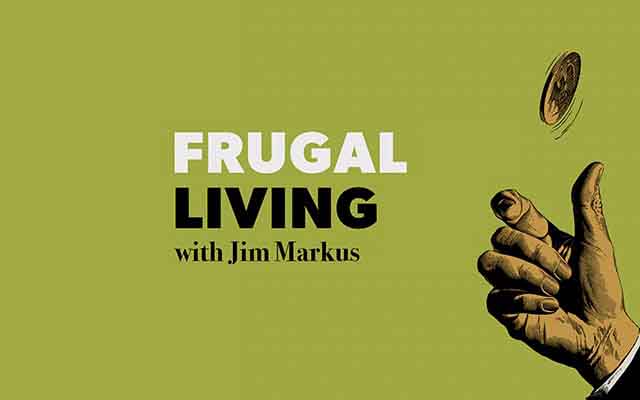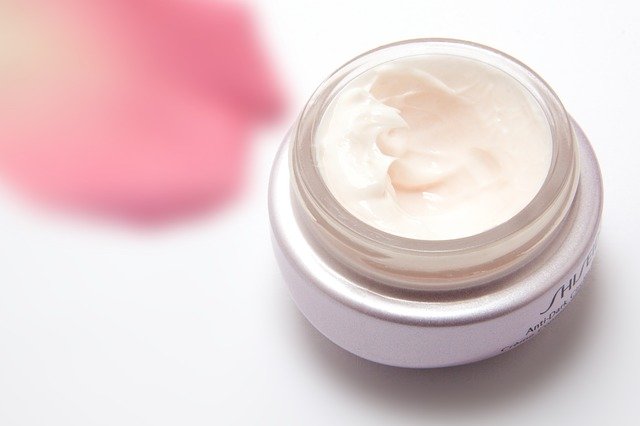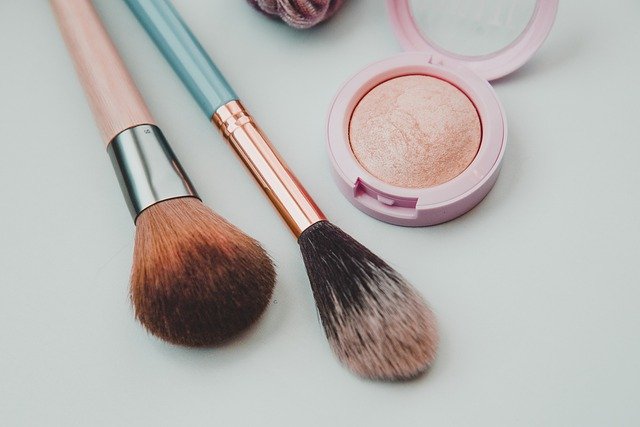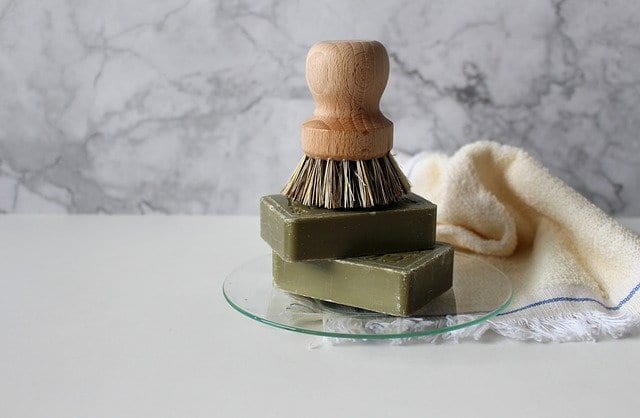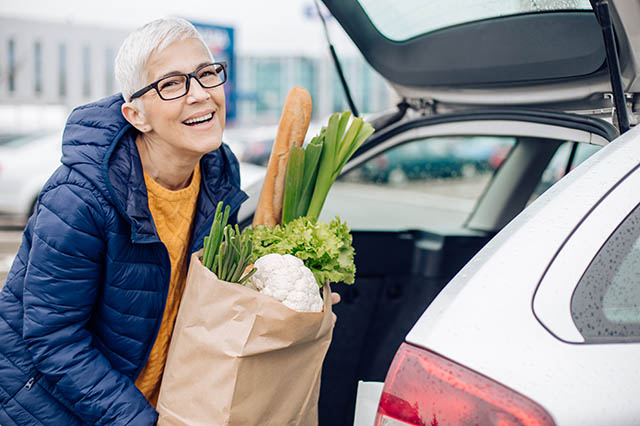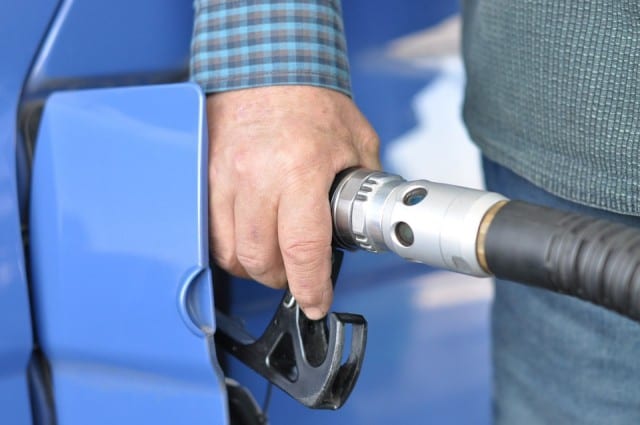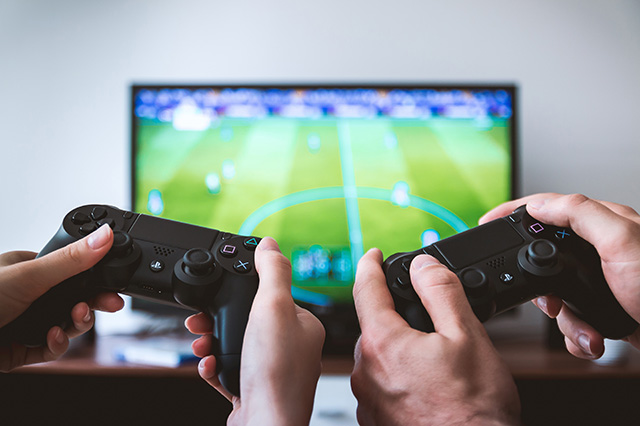Frugal Living: How do you deal with clutter? (Part 1)
In this episode, Jim speaks with Jennifer Howard, author of Clutter: An Untidy History, about real-world clutter problems and the robust history behind this stigmatized issue. You can listen to Frugal Living with Jim Markus on Apple Podcasts, on Spotify, on Amazon, on Anchor.fm, iHeartRadio, or anywhere you go to find podcasts.
This is part 1 of a 2-part episode. For more from Jennifer, check for the second episode on 2/22 wherever you listen to podcasts.
Clutter exists in a lot of different ways
Clutter can be defined in a lot of different ways, and we tend to feel ashamed for things we hold on to. Howard explains how clutter tends to be a hidden topic, even though it is so common. In this society, we are encouraged to buy a lot of things and then we feel ashamed when they begin to pile up instead of being used in a harmonious way. The infamous phrase “don’t mind the mess” hosts use when having guests over proves the discomfort people have with the excessive clutter. However, clutter isn’t just an embarrassment, it can also become a serious health risk, fire risk, and an overall threat to our wellbeing.
Howard explains how excessive clutter can contribute to internal shame, and how condemnation for the mess can make a person feel as though they have failed in some way. The feeling of falling short of what someone is supposed to be can be harmful to mental health, so Howard suggests starting the conversation of decluttering with a more gentle and less aggressive approach. Instead of focusing on the mistakes and shortcomings of the person, focus on making the person feel as though their clutter is a manageable issue.
How clutter can affect mental health
Howard shares how doing a forced clean-out of clutter can harm a person’s mental health and give them trauma comparable to a hurricane or tornado. The feeling of loss and devastation can become overwhelming for the person whose clutter is being forcefully trashed. Thus, Howard suggests a gentler approach be taken to ensure a positive mental reaction from the clearing of clutter.
When trying to help with a hoarding situation, it is important to understand that there is value in the items that are being cleared and that letting go of certain items means letting go of personal baggage. When trying to clear out the clutter, maintain respect for the person’s personal belongings and be mindful of their feelings and connection with those items. Remember that clutter is common, and that you are not alone.
Helpful Links from Jennifer
CLUTTER reading list
–helpful books for people looking for more ways into the subject
CLUTTER paperback edition
–with a new afterword (coming Jan. 2022)
Links to Jennifer’s Social Media feeds, newsletter, etc.
The Guardian on cluttercore
NAPO (National Association of Productivity & Organizing Professionals)
–handy for finding organizers in your area or learning more about how to become an organizer
“Get Help with Hoarding Disorder”
–The American Psychiatric Association’s guide to resources on hoarding disorder and how to seek help and support
“Finding Help in a Crisis Downsizing”
–AARP article on senior move managers (another growing trend/entrepreneurial zone) and downsizing
Read a Transcript of this Episode
Jim (00:02):
This is Frugal Living. We talk about living a frugal life, and sometimes that means hanging onto things other people might have thrown out. But what happens when that becomes a problem? In this two-part episode, I talked to Jennifer Howard about clutter. It’s an area of expertise for her. She literally wrote the book on it. Here’s the first part of our conversation. <music> I was delighted. I went out and I bought your book. I was already a, a fan of, kind of, the topic of decluttering, but you have a really unique perspective. You literally wrote the book on clutter, and I’ve never seen anyone dive into the history of it the way that you have. So I really appreciate you being here and I’m, I’d like to dive into all of it.
Jennifer (01:00):
Oh, it would, there’s, there’s a lot to dive into. I know it’s, it’s not a long book, but the subject is enormous. Uh, kind of, befitting the, befitting what it is. You know, the nature of it. There’s a lot to unpack.
Jim (01:11):
One of the things that I don’t think we talk about often is the idea that clutter is a pretty universal thing. You know someone that probably has a lot more clutter than they need. And I’m specifically avoiding the use of the term “hoarding,” because again, this is, you know, a common way that we describe a problem. But clutter exists in a lot of different ways and it shouldn’t define a person. It’s something you talk about. But can you tell me a little bit about the private nature of clutter? Why isn’t this something we have discussions about?
Jennifer (01:44):
Well, you’re quite right. It tends to be a hidden, a hidden topic and a hidden problem, even though it is so common. There’s a lot of shame around it in this society in particular. We are always encouraged to buy more things and surround ourselves with stuff, but then we’re also judged if we don’t manage that stuff in a very harmonious and efficient and effective way. And of course nobody, nobody wants to live in squalor. You know, there’s certain hygiene questions and all of that. But how many times, back at least before the pandemic, would you have someone over to your house and say, “Oh, don’t mind the mess. You know, don’t mind, just ignore that. Uh, I’m gonna get to those papers later.” You know, there’s this, there’s this real, sort of, ingrained shame or discomfort with showing how, you know, when we’re not living this sort of picture-perfect Instagrammable house and garden, uh, home-edit kind of life. Then of course, for some people, too many of us unfortunately, it becomes more than just an organizational problem and, uh, a bit of an embarrassment. It becomes a real, you know, often life-threatening issue. And the, the more squalid the conditions, the less anybody is likely to want to show that side to the world because they know they’re gonna be judged and, you know, perhaps shamed for it.
Jim (02:52):
I’m sure. And it’s a spiral, right? If we’re collecting and that’s one of the methods we deal with, you know, a feeling of lack of control is to control what comes into our life and collect that and keep that, that expands the problem.
Jennifer (03:07):
Yes.
Jim (03:07):
But you touched on something just now that I’d like to dive further into. It’s not just an embarrassment like it’s not just something we’re ashamed to talk about. This can be a serious health risk. It can be a serious fire risk. This can be a serious risk to not just yourself. Can you tell me a little bit more about that? You discussed this in the book and that’s why I ask?
Jennifer (03:29):
Sure. No, one of the most fascinating parts of the research I did for the book was to go and spend time at a fire station in Philadelphia. I had heard a, a fire captain who, who’s there present at a, at a, uh, hoarding task force in Philadelphia. And I was so interested by what he had to say. And he, he has a very humane take on it. It’s not judgmental at all. But he told very vivid stories about what it’s like to be a firefighter trying to get into a terribly cluttered house and just to get to someone and get them, you know, get them out of there or get them medical aid, for example. So the, the gear where it weighs, I think he told me 90 pounds. You know, you’ve got your full proof, fire-protection suit, the tank of oxygen, the hose–it’s full of water. And you have to get all of this into a house. Eh, he came up with a great term, which I love called “heavy contents.” So it’s, if it’s an extreme clutter situation, they call it heavy contents to really signal to the firefighters who might be responding to the call that, that you gotta watch out. This is a real, this could really be a fire trap of, for you and for the people you’re trying to help. I said he was very humane about it. He’s, he had, had a family member who suffered from hoarding disorder. So he’d seen it firsthand in his personal life, as well as his professional life. It, he really brought home to me how, how dangerous it is both for the firefighters and for the people that they’re trying to help. He, there, no, apparently they don’t keep statistics nationally on clutter-related fire deaths. But when he said his own statistics and talks to fire captains elsewhere, he thinks it’s about 25% of civilian deaths are related in some way to clutter. And it makes sense. You know, fire behaves so unpredictably. There’s not only the problem of getting through, like, columns of newspaper or furniture everywhere, just stuff everywhere. But fire can get under stuff and, kind of, smolder. And then when you move it trying to get maybe to the person who needs help, it will burst into, into open flame. And he said a house on fire is a house under demolition. You know, it, it’s fast. And it very, could be really deadly.
Jim (05:25):
That’s a really interesting point and something we don’t usually think of when we think of clutter.
Jennifer (05:31):
Right.
Jim (05:31):
It’s also something that you, I think you captured really well in that same chapter. You talked about effective and ineffective ways of, of addressing clutter issues. When someone does hoard items, when they collect items in an unsafe and unhealthy way, we have as a society decided, “Hey, let’s send in TV cameras, you know, and let’s, like, confront people and say you’re wrong. And what you’re doing is, you know, wrong, and you should be ashamed.” But that’s not as effective. Can you tell me, and again, this, I don’t want you to rehash your whole book here because people should check this out, but this is really good.
Jennifer (06:13):
Well, go, going back to the point of shame, you know, which is, as, as I said, so ingrained in us, we don’t always necessarily realize how, how deeply. But when you, when it, in the first impulse, when you walk into the house, uh, into a house that, where there’s a heavy content situation, a hoarding situation, the first impulse is often revulsion or disbelief. “How could you live this way? Look at this! This is disgusting! This is, you know, this is awful.” And it, it becomes, it, it’s often cast or presented to the person suffering from it as personal failing, a moral failing. Just a real… They should be ashamed of it, and they just, you know, that they’ve, they’ve fallen short of what they’re supposed to be. And it puts them immediately on a defensive. You know, that, “How can you live like this?” I mean, that’s not, that’s not a good starting point for a conversation, you know. Whereas if you go in and you say, like, the fire captain will go in and say, “You know, Philadelphia city code requires that you have”–I dunno if it’s 18 inches or something, I can’t remember what the exact measurement is–but you have to have a card or in and out. He said that this is fire code. “I just wanna be able, if you ever needed, you know, life saving medical aid, I just wanna be able to get to you. Get, get my men in there with, you know, the medical equipment or the stretcher or the fire hose. Can we just work to make you safer and keep us safe?” So it doesn’t present it as, eh, eh, presented as a kind of manageable practical problem. He doesn’t go in there and say, “We gotta get rid of all this stuff,” or, “You gotta get rid of all this stuff,” which has, sort of, been the, um, kind of, the, the popular approach, which is to do a forced clean out. Either a relative will go in and say, “We’re gonna, we are gonna get the junk haulers over here today.” Or there’ll be a set of, you know, a team of interventionists who come in and just, eh–it is, it’s a trauma. It’s, sort of, I talked to some mental health professionals about this. And one of them told me that if you do a forced clean out of a house that’s overstuffed, you’re basically doing the same psychic damage as, say, a hurricane or a flood, something that just comes in and wipes out everybody’s stuff, you know, in a matter of hours. It’s the same kind of trauma even though the cause is different. And so you really, people who are trying to help, uh, in a, in a hoarding situation really have to think about, you know, about out the wellbeing of the person, not just the practical need to get rid of some of the stuff.
Jim (08:26):
Oh, that’s a really good point. The book that you wrote spurred from an event in your own life. You were cleaning out your mother’s house. Is that right?
Jennifer (08:35):
Yes, that’s right.
Jim (08:37):
I know this is something a lot of people experience. Uh, you’re not the first person I’ve talked to this week who’s undergone this. You know, I had to clean out a house for a family member. And there’s a lot of emotional baggage that goes with that. You know, there’s a, obviously there’s memories, you know. You talk a bit about souvenirs in your book. But there’s also, I think, an aspect of, you know, respect for someone else’s stuff, you know. What’s good, what’s, what’s worth saving, what’s worth, you know, keeping in your own storage locker versus what’s worth throwing out. For anyone that’s undergoing that kind of situation, do you have advice on where to start?
Jennifer (09:15):
Oh, first sympathies to anybody who is going through it. And there are a lot of us who either have gone through it, are going through it, or will have to go through it at some point or another in our lives. There’re many different ways that the situation can come about. But inevitably, at first, the first thing to know is you’re not alone. And there is some comfort in that. I felt so isolated when I first had, eh, when this situation fell to me to deal with. I’m an only child. My, my father and, and mother had been, had been divorced for decades. You know, dad is not living in the same city. My stepfather was dead. I have no siblings. My husband was a great help, you know, bless him. But I realized as far as the emotional decisions, it all fell to me. And it came on pretty suddenly. Looking back we can see now that she had been falling into dementia for a long time. And at some point she went from being a pack rat and kind of disorganized to really having a, a heavy content situation that was dangerous to her and to others. But, I, you know, she was very independent. She wouldn’t admit there was a problem, wouldn’t accept the kind of help that we thought we, we were trying to offer, you know. I really felt ambushed by it. I probably shouldn’t have. But whatever the situation is, it, you will probably feel overwhelmed. Be kind to yourself going into it. Know that it’s gonna be hard. Know that it will involve a lot of decisions. A lot of it does come down to the relationship that you have or had with the person who’s things you are dealing with. I mean, it’s not just the stuff, it’s all the emotion that’s packed in a, in amongst the things. You will probably discover–I mean, I discovered so much family history that I hadn’t really known about. The sadness for me was not only that I had to deal with them, but that, that there was no one there to tell me the stories about them. I was not really fully prepared for the sense of loss that that would create. That sort of a, “But who is, you know, who is this photograph of? I didn’t know mom was interested in this subject. Look at all these books she’s got on it.” There may be also some surprising joys to it, depending on how you do it and what, what your timetable is and what kind of help you have. You may discover, you may be reminded of things. Like, I was reminded that my, my mother used to love to paint. You know, so I found a lot of painting books and supplies. And I’d always, sort of, known that about her, but it was neat to actually see all the equipment for it. And so in some ways, uh, there, there were times when I felt like she, I was being reminded of the life she had had, not just the life that she, you know, the, kind of, awful trap of stuff she had fallen into. I also did not know how many, how many resources there are out there for people who are going through this. There, I really, as I said, felt very alone and, and struggled with where to start. Just where do I start physically, literally–all this stuff, you know? What do I need to deal with? I did find a personal organizer who just came in and helped me identify the important financial papers, because there were a lot of financial affairs. I mean, that was an immediate practical thing. We just had to pay the bills and figure out what bills had to be paid. It, it might be worth talking to a lawyer. I had to get a power of attorney. My mother was still alive at that point. So I could, so I could actually, you know, make her financial decisions and pay the bills and get access to her tax records and all that. And there are people who will help you with that. There are a lot of good books on the subject. Depending on where you live there may be a council on aging or city services who will help you, particularly if you’re in a situation where you need to find alternate living situations for somebody who just can’t safely be in their house anymore. If the person has passed that’s a different, you know, set of calculations and decisions. But there are so many resources. And some of them you do have to pay for some, but there, there are a lot of resources that you don’t really need to pay much of anything for. I found several good books on the subject that gave advice on, sort of, how to process things. Ideally, you don’t have to do it too fast because you have to make a lot of emotional decisions as well as practical decisions. Some people have to do it very quickly though. And if that’s the case, then get help. You know, get an organizer if you can afford it. Or maybe you have a good friend who is talented at handling papers and can just help you sort through things. Get emotional backup. You know, take care of yourself. If you have a mental health professional you can talk to, it’s really worth doing. Or a good friend, you know, someone who can just, sort of, be a sounding board because there will be a lot of stress. It’s physically demanding, you know. We had to get up in, into an attic that all had fiberglass insulation that was decaying. And we had to, sort of, suit up and, you know, hand boxes down this ladder. And you really have to be prepared for that or get help. And some people, if I think, actually do find it, kind of, a great way to honor their, their loved ones, either departed or not. If you’re fortunate enough to be helping somebody declutter and downsize, do take that opportunity to get those stories, you know, and help them appreciate their lives. ‘Cause that can be… I, I’m sorry my mother didn’t have that opportunity to, kind of, go through her own things and relive highlights of her life. My father, who’s now 88 is trying to do that. It’s hard, but I think he’s enjoying it because he’s being reminded of things in the past that were meaningful to him, things he’s done. So it can actually be, if you approach it right and you’re lucky, it, it can end up being a satisfying process. And the other thing is be prepared if you want to do the ecologically and socially good thing and rehome your stuff. It may not be very easy. You know, you can’t just necessarily take everything into Goodwill and dump it on them. I spent a lot of time rehoming things and trying to be thoughtful about it both to honor my mother, but also to make sure that things that I didn’t need anymore, couldn’t keep, were going to people who could actually use them. So they weren’t just gonna contribute to this great stream of waste, you know, that we create.
Jim (14:26):
That’s a really important part of your book as well. And I’d like to get to that very shortly. <music> This episode, as always, was brought to you by Brad’s Deals. There’s a community of people here scouring the web for the best deals on everything. The site is B R A D S D E A L S.com. One trick for deal hunters: You can sign up for the Brads Deals newsletter. That way, you’ll have a better chance of snagging something stellar before it sells out. Thanks for listening. <music>
Jim (15:08):
I think when we think about things like estate sales, a lot of times we can think, “Oh, it’s a great deal!” You know, especially as a frugal audience, we can also think, “Oh, like, someone’s trying to make some money off of, you know, like, a bunch of stuff.” But I think a lot of times we forget that estate sales exist also to rehome. Like, yes, there’s a commerce part of this. Some of this is, “Hey, you’re gonna get a great dining room table for less than you’d find it anywhere else.” But realistically, it’s also, “How can we save as much of this as possible from going in landfills,” which is a very realistic possibility when you’re dealing with someone’s life accumulation.
Jennifer (15:47):
I did do an estate sale. It was helpful. It was not, it was not the most satisfying part of the process as far–I, I actually, I think I got more, more of an emotional payout from thoughtfully rehoming things like the carload of office supplies I took to the animal shelter. That was more meaningful to me than, than the money that, that we made from the estate sale, which was, you know, helpful as far as dealing with mom’s bills. But it wasn’t, it wasn’t so much that I felt we should just sell everything that way. And of course there’s things that won’t get picked up, even if the prices are good. A bargain is not always a bargain. When you think about, you know, somebody else, say, you have to then make sure if you’re gonna buy this thing, you’re gonna take on the cost of storing it, caring for it. Maybe it’ll turn up in your estate sale down the road. I mean, I, I love thrift stores and estate sales and things, but it’s, they’re only one part of the solution.
Jim (16:33):
This conversation’s already branched in three different directions that I’d love to follow up on. First, you’ve alluded to the greater impact of accumulation, of clutter. Impact, presumably, you know, environmentally is what you’re talking about and I’d love to know a little bit more about your thoughts on that.
Jennifer (16:51):
Sure. Well, there actually are several different kinds of costs that I think about when I think about waste and discards and items that we don’t need or want anymore. The ecological one is critical, I think, to think about. In part, you have to think about where your stuff comes from and what the costs are not only to you, the consumer as you buy something, but to the people who made it. Are they working in horrible conditions somewhere that, you know, getting not a living wage? The resource is extracted from the planet to make whatever it is. You know, there’s a lot of stuff we buy that’s cheap. We don’t think about where it comes from. And then of course there’s the, “Well, okay, you’re done with it.” Where does it go? Will it wind up in a landfill? Will it wind up, you know, as part of the Great Pacific Garbage Patch? Whether it’s your soda bottle or your, your kid’s toy that you just, sort of, tossed out to–went to Goodwill or got, I don’t know… Our objects only spend part of their own life cycles with us, right? They have a before and an after life. And it’s worth thinking about what those lives look like and what, what the cost is to, you know, human life and the planet, which is a shared and unfortunately finite resource. But I also think about other costs. I think about, in my own experience, it took so much time to deal with all my mother’s things. I mean, it, it took me two years. And I was working full time and I had two kids in, you know, in school. So it was, I was busy anyway. But a lot of nights, a lot of weekends going over there trying to go through things, clean out, clean up, get things to Goodwill, get the junk hauler for the things I couldn’t rehome. There were so many decisions and it was exhausting. And all of that is time and energy I would rather have been putting into my children, and my husband, and, and my work, and my animals, my garden. You know, there’s an emotional cost and a time cost, which I think people may not always factor in enough when they think about clutter and the stuff they have. All these things take an active toll. Even if you’re not dealing with a big clean out, you know, there’s a psychic toll. If you have a cluttered house or something is just, like, not in the right place, it, kind of, nag–At least, it, it nags at me. I don’t know. Maybe I’m strange. And then if you wanna live a really, a minimalist life, that takes a huge amount of effort too. And that’s depending on how you approach it. So there, there are a lot of hidden costs, as well as the obvious.
Jim (19:06):
You talk about how minimalism takes time. Like, it takes effort to live a minimalist life, to get your house looking like a minimalist house. This concept of minimalism is really… As, as wonderful as it is, especially as a frugal-minded person, it’s also a brand. And it’s very much a lifestyle brand. It’s something that’s curated in magazines, in, you know, TV spots. These spotless areas aren’t that way by accident. And that’s done because of commerce. Can you talk about the role of commerce in, you know, clutter and decluttering?
Jennifer (19:41):
Sure. It’s a big subject. I, I have to say, I often do respond positively to the minimalist look. I kind of like it, but this doesn’t seem like a realistic way for most of us to live. It is often used to market certain kinds of organizing supplies or services. Do you want your house to look like what you see on Instagram? It’s gonna take a whole lot of effort and probably a lot of trips to the Container Store. Now, I have some things from the Container Store. I’m not, you know, be– You need things to store things in, right? But I, it’s so deceptive. You go in there thinking you’re gonna come out with a simpler solution. And then you end up with more stuff often. Because it does take time to really live that, kind of, surface minimalist life. I think it’s harder for people who don’t have a lot of resources or as many… You know, you could spend a lot of money getting designers to come in and make your house look great or buying, you know, lovely supplies. And then there’s a cost of… Any, anybody who lives in a house when, even if you’re just living by yourself, you’re gonna create messes as you go through your space. You know, you pick up the coffee cup and set it down, and you have the magazine, and you’ve got the book or whatever. So it, it’s exhausting to really try to, to live. And I think you can throw a lot of precious time and mo–, as well as money at, at achieving really… It’s not all that realistic a lifestyle for most of us.
Jim (20:53):
That’s very true. In your book you talk a little bit about how some of the reasons we collect things to put things in comes back from the Victorian era. And how this isn’t, like, a recent modern development that we’re collecting stuff and accumulating a vast amount of things that we don’t use. Can you talk a little bit about the history of it?
Jennifer (21:16):
Sure. Well, this feeds into the, uh, consumerism that we’ve been, kind of, talking about all along. I was fascinated so I started to talk to historians and read books on the history of our stuff. And particularly in the west, you know, there’s a global circulation of goods and stuff that, that goes back centuries. And I don’t, I don’t pretend to know all, you know, everything about that history. But in the west with the rise of industrialism– And this goes back several centuries now. Even before we had factories, you know, there were people going out on trading missions and, and establishing footholds in other parts of the world. Bringing back things to, you know, consume and to buy. It’s been a global trade and stuff now for centuries. But with the industrial revolution in, in, uh, Britain, you really ramped up the means of production, right? Now as you had a lot more raw, raw materials coming in, more– You know, there were factories that could process it quickly, turn it into more things. More people living in cities eager to buy things. And I really could see, as I started reading about the Victorian era in particular, I really felt, it felt very resonant to me as I looked at my own family’s history with stuff and that impulse to buy and display things. And this idea that more was usually better somehow. This hunger for new things, for material displays, it felt very contemporary to me. And there was so much emphasis, again, going back to the idea of shame and minimalism. There was so much emphasis in that Victorian era, particularly in the west, on keeping a nice house. That’s how you, you showed that you were solidly middle class or aspiring to a good station in life is that you showcase your parlor and they, all the things you had. That was very much, as it is now, I think, held up as a standard and an ideal. Not everybody bought into it as not everybody buys into it now, but those, those ideas are very powerful. And I just found them so resonant for me, what I had seen. I felt like my family and a lot of people I know are the inheritors of this tradition that goes back several centuries now with, with the Victorians being particularly the beginning of some full flowering of materialism.
Jim (23:15):
This was part one of a two-part episode on clutter. Special thanks to Jennifer Howard who wrote the book Clutter: An Untidy History and to our audio editor intern, Jenny Blauveltz.
More about Frugal Living with Jim Markus
To hear more from Jennifer Howard, check out the latest episode of Frugal Living. Frugal Living is a podcast for smart consumers. How do you spend less and get more? The show, sponsored by Brad’s Deals, features interviews, stories, tips, and tricks. Jim Markus hosts season four, out now.
Subscribe Now on Apple Podcasts
What did you think of this week’s episode? Let us know in the comments!
The post Frugal Living: How do you deal with clutter? (Part 1) appeared first on The Brad's Deals Blog.
